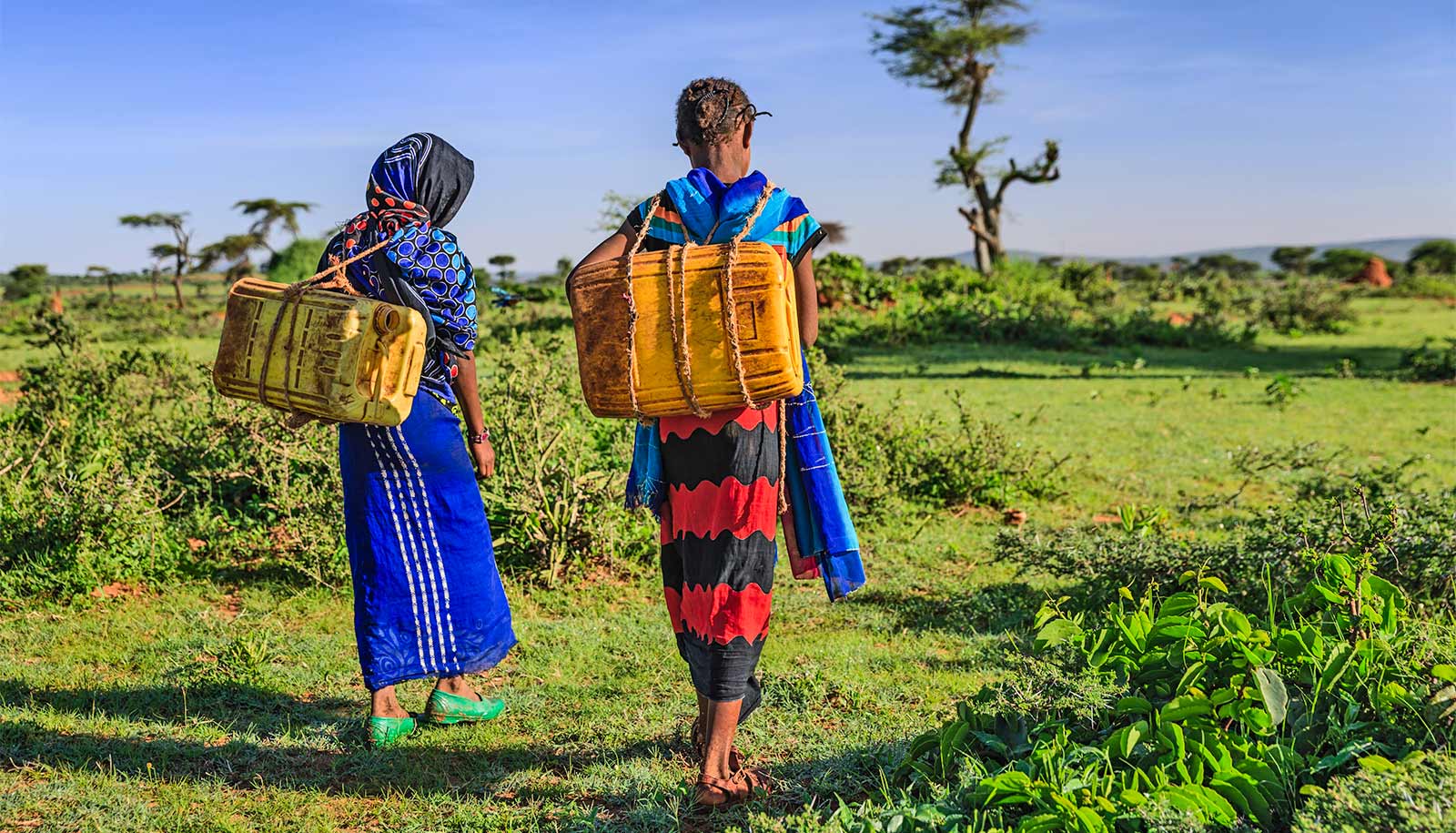How to boost water access in developing countries
How to boost water access in developing countries Futurity: Research News


New Research Offers Solutions to Improve Drinking Water Access in Developing Countries

Introduction
A new study has examined the critical problem of drinking water access in rural areas of developing countries and recommends optimal locations to build new water projects. This research is aligned with the Sustainable Development Goals (SDGs) set by the United Nations.
Access to Clean Drinking Water
According to UNICEF and the World Health Organization, in 2020, 771 million people worldwide still lacked access to clean drinking water. This highlights the urgent need to address this issue and achieve SDG 6: Clean Water and Sanitation.
NGOs and Water Projects
Many nongovernmental organizations (NGOs) prioritize building new water projects, including handpumps and small piped systems, to bring clean water to rural areas of developing countries. These initiatives contribute to SDG 6 and aim to improve access to clean water for all.
Research in Tigray, Ethiopia
Researchers conducted a study in Tigray, Ethiopia, where millions of people have to walk long distances each day to access communal water. The study utilized field research conducted in Tigray and collaborations with local and international NGOs. The findings of this study contribute to SDG 6.
Challenges and Solutions
The burden of fetching water falls mostly on women and children, who have to carry heavy containers for long distances. Due to a lack of local government solutions, NGOs build water projects that extract underground water to reduce the population’s distance and time to access it. However, building these projects is expensive and funding is scarce. The researchers propose a solution that involves community collaboration to increase the potential supply for both communities. This solution aligns with SDG 6 and promotes community engagement.
Optimization Model
The research team created a unique dataset with current demand and distance to an existing water project in Tigray. Using analytics, they built an optimization model that incorporates community collaboration. This model proved to be a better solution in terms of distance to water and equity in access to water compared to other models considered. The findings of this model contribute to SDG 6.
Improving Access Amid Supply Shocks
The research team also created a model to study ways to improve drinking water access amid supply shocks, taking into account the current civil war in Ethiopia. This model aims to address the challenges faced during conflicts and contributes to SDG 6.
Impact and Future Work
The findings of this research are being shared with charity: water, an NGO that focuses on providing clean water solutions. They will use the new model to inform the selection of locations for new water projects in various countries, including Malawi and the Central African Republic. This collaboration contributes to SDG 6 and promotes sustainable development.
Conclusion
This research offers valuable solutions to improve drinking water access in developing countries, particularly in rural areas. By prioritizing community collaboration and utilizing optimization models, NGOs can make a significant impact in achieving SDG 6 and ensuring access to clean water for all.
SDGs, Targets, and Indicators
1. Which SDGs are addressed or connected to the issues highlighted in the article?
- SDG 6: Clean Water and Sanitation
- SDG 17: Partnerships for the Goals
The article discusses the critical problem of drinking water access in rural areas of developing countries, which directly relates to SDG 6 – Clean Water and Sanitation. It also mentions the collaboration between NGOs and local stakeholders, highlighting the importance of partnerships for achieving the goals, as emphasized in SDG 17 – Partnerships for the Goals.
2. What specific targets under those SDGs can be identified based on the article’s content?
- Target 6.1: By 2030, achieve universal and equitable access to safe and affordable drinking water for all.
- Target 6.b: Support and strengthen the participation of local communities in improving water and sanitation management.
- Target 17.16: Enhance the global partnership for sustainable development, complemented by multi-stakeholder partnerships that mobilize and share knowledge, expertise, technology, and financial resources.
The article highlights the need to provide clean drinking water to rural areas of developing countries, aligning with Target 6.1 of SDG 6. It also emphasizes the importance of community participation in water management, which corresponds to Target 6.b. Additionally, the collaboration between NGOs and local stakeholders demonstrates the implementation of Target 17.16 of SDG 17.
3. Are there any indicators mentioned or implied in the article that can be used to measure progress towards the identified targets?
- Indicator 6.1.1: Proportion of the population using safely managed drinking water services.
- Indicator 6.b.1: Proportion of local administrative units with established and operational water and sanitation management plans.
- Indicator 17.16.1: Number of countries reporting progress in multi-stakeholder development effectiveness monitoring frameworks that support the achievement of the sustainable development goals.
The article does not explicitly mention specific indicators, but it implies their relevance to measure progress towards the identified targets. Indicator 6.1.1 can be used to assess the proportion of the population with access to safe drinking water services, while Indicator 6.b.1 can measure the establishment and operation of water and sanitation management plans at the local level. Indicator 17.16.1 can track the number of countries reporting progress in multi-stakeholder development effectiveness monitoring frameworks, indicating the implementation of partnerships for sustainable development.
4. Table: SDGs, Targets, and Indicators
| SDGs | Targets | Indicators |
|---|---|---|
| SDG 6: Clean Water and Sanitation | Target 6.1: By 2030, achieve universal and equitable access to safe and affordable drinking water for all. | Indicator 6.1.1: Proportion of the population using safely managed drinking water services. |
| SDG 17: Partnerships for the Goals | Target 6.b: Support and strengthen the participation of local communities in improving water and sanitation management. | Indicator 6.b.1: Proportion of local administrative units with established and operational water and sanitation management plans. |
| Target 17.16: Enhance the global partnership for sustainable development, complemented by multi-stakeholder partnerships that mobilize and share knowledge, expertise, technology, and financial resources. | Indicator 17.16.1: Number of countries reporting progress in multi-stakeholder development effectiveness monitoring frameworks that support the achievement of the sustainable development goals. |
Behold! This splendid article springs forth from the wellspring of knowledge, shaped by a wondrous proprietary AI technology that delved into a vast ocean of data, illuminating the path towards the Sustainable Development Goals. Remember that all rights are reserved by SDG Investors LLC, empowering us to champion progress together.
Source: futurity.org

Join us, as fellow seekers of change, on a transformative journey at https://sdgtalks.ai/welcome, where you can become a member and actively contribute to shaping a brighter future.







